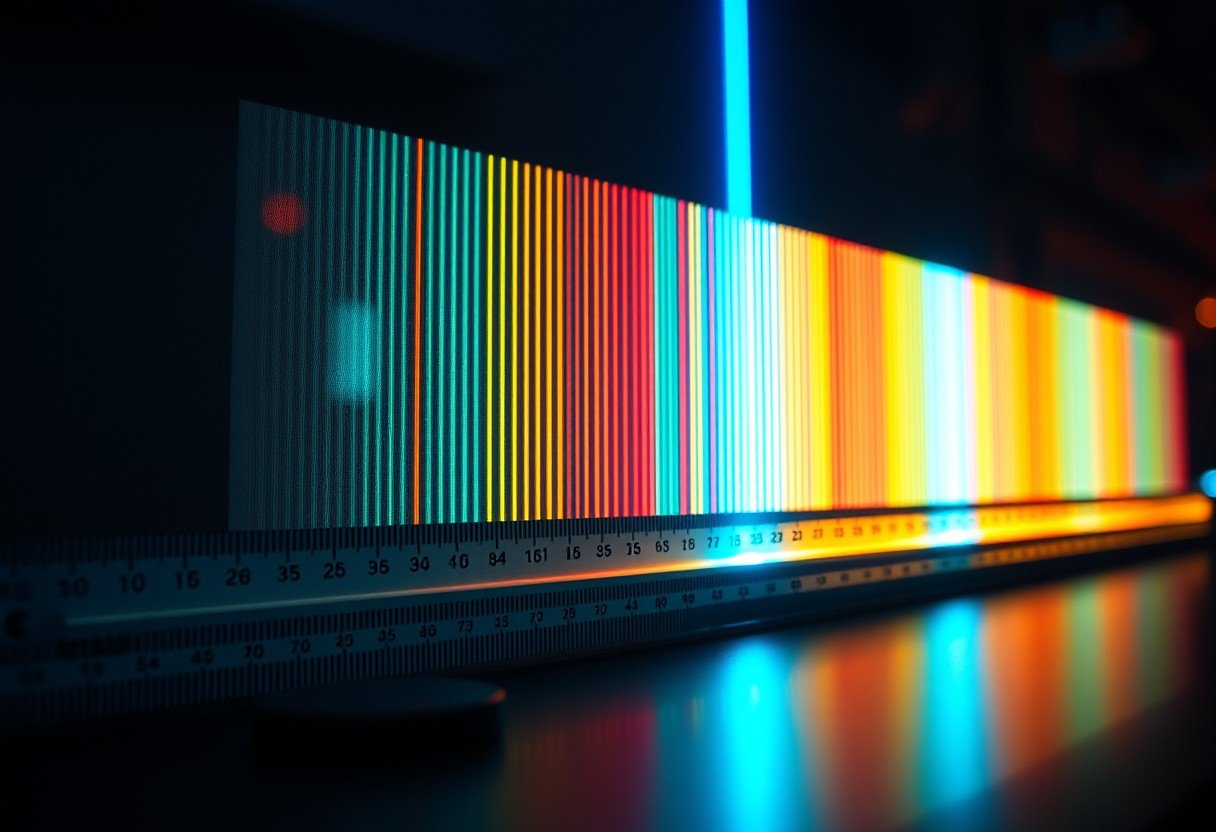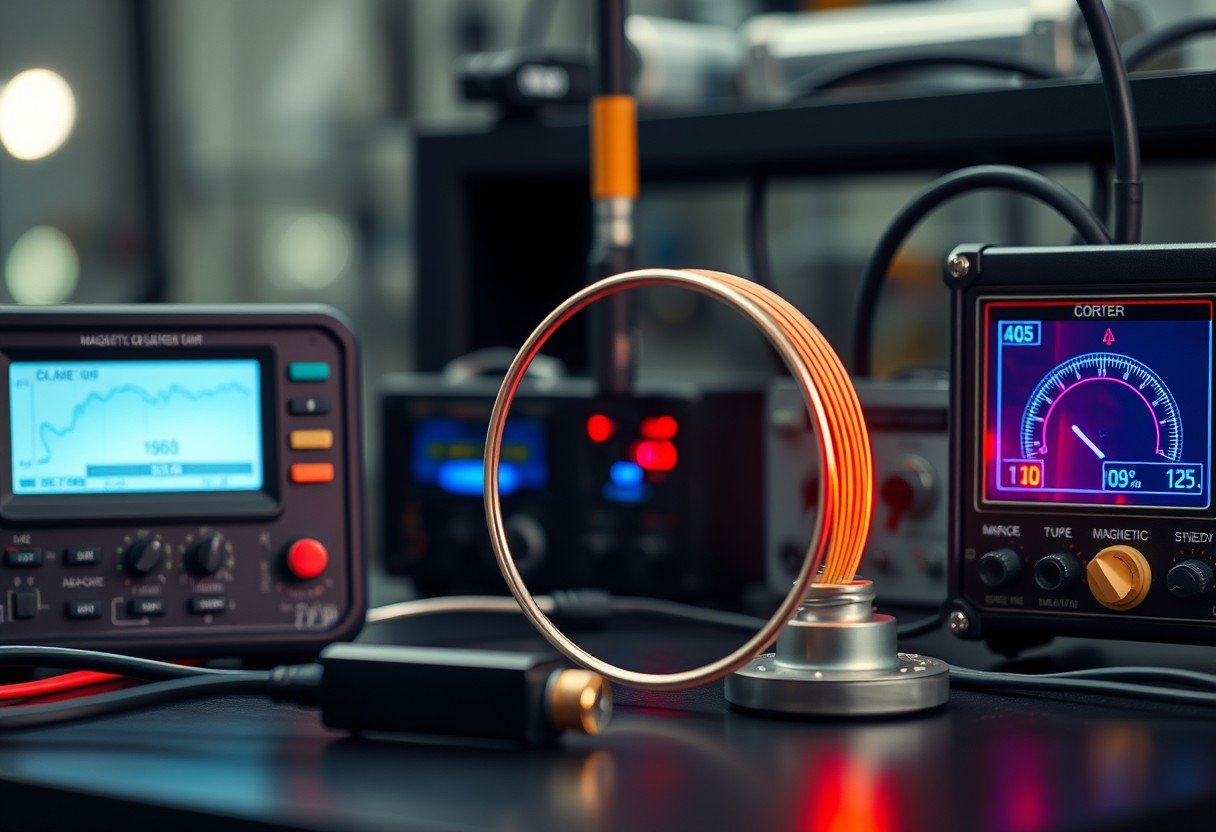When light waves interfere, they create a pattern of bright and dark lines called fringes. The distance between these lines, known as fringe spacing, is not random. It is directly influenced by the light’s wavelength. Understanding how changing the wavelength affects this spacing is key to grasping fundamental concepts in optics and is crucial for many technologies, from scientific research to telecommunications. This article explains this important relationship in simple terms.
Understanding the Basics of Fringe Spacing
Fringe spacing is simply the distance from the center of one bright fringe to the center of the next bright fringe, or from one dark fringe to the next. Think of it as the width of the stripes in an interference pattern. This pattern appears when light from a coherent source, like a laser, passes through two narrow slits and lands on a screen.
The spacing of these fringes is not just a curious visual effect; it’s a measurable quantity that gives scientists valuable information. By measuring fringe spacing, researchers can determine the wavelength of light, study the properties of waves, and explore the dual wave-particle nature of light. It is a foundational measurement in the field of wave optics.
Several factors work together to determine how far apart the fringes will be. It’s important to know these variables because changing any one of them will alter the final pattern you see on the screen.
These key factors are:
- The wavelength of the light being used.
- The distance between the two slits the light passes through.
- The distance from the slits to the screen where the pattern is observed.
Each of these elements plays a specific role in shaping the interference pattern. Grasping their individual effects helps predict how the fringes will behave in an experiment.
The Direct Link Between Wavelength and Fringe Spacing
The wavelength of light is one of the most significant factors controlling fringe spacing. The relationship is straightforward: fringe spacing is directly proportional to the wavelength. This means if you use light with a longer wavelength, you will get wider fringe spacing.
For instance, red light has a longer wavelength than blue light. If you perform a double-slit experiment first with red light and then with blue light, keeping everything else the same, the fringes produced by the red light will be more spread out than those from the blue light. The blue light will create a more compact, tightly spaced pattern.
This inverse relationship is a core principle of wave interference. As the wavelength of light decreases, the spacing between the interference fringes also decreases. The entire pattern of bright and dark bands will appear to be squished closer together, making the individual fringes narrower and more numerous within the same area.
What Happens When You Decrease the Wavelength?
When you actively decrease the wavelength of light in an experiment, you will see an immediate and predictable change in the interference pattern. The fringes will move closer to one another, and the overall fringe width will shrink.
This change can have a big impact on the clarity and visibility of the pattern. Tighter fringes can sometimes provide more detail within a small area, but if they become too close, they can be difficult to distinguish and measure accurately. This is why scientists carefully select the wavelength of light to optimize the resolution for their specific experimental goals.
To make this relationship clearer, let’s compare what happens when you decrease the wavelength versus when you increase it.
| Wavelength Condition | Resulting Fringe Spacing | Pattern Appearance |
|---|---|---|
| Decreased Wavelength (e.g., Blue Light) | Narrower Spacing | Fringes are closely packed |
| Increased Wavelength (e.g., Red Light) | Wider Spacing | Fringes are spread out |
Understanding this dynamic is essential for anyone working with optical systems. Whether you are designing a high-precision laser or a simple lab experiment, controlling the wavelength is key to achieving the desired outcome in your interference patterns.
Observing the Change in Real Experiments
This principle is not just a theory found in textbooks; it is consistently proven through countless experiments. The double-slit experiment is the classic example used to demonstrate the relationship between wavelength and fringe spacing.
In a controlled laboratory setting, researchers use monochromatic light sources, such as lasers, which produce light of a single wavelength. By switching between lasers of different colors (and therefore different wavelengths), they can precisely measure the change in fringe spacing.
The results consistently show that as the wavelength gets shorter, the distance between the fringes shrinks. For example, experimental data confirms that doubling the frequency of the light, which effectively halves its wavelength, will also cut the fringe spacing in half. These observations are a powerful confirmation of the wave nature of light.
Why this Relationship Matters in Technology and Research
The connection between wavelength and fringe spacing has profound practical applications across science and technology. It is not just an academic concept but a tool used to build and improve the devices we use every day.
In scientific research, manipulating fringe patterns allows scientists to study materials at a microscopic level. By observing how different materials affect the interference of light, they can learn about molecular structures and even quantum behaviors. Fields like spectroscopy rely heavily on these principles to analyze substances.
Technological innovation also benefits greatly from this knowledge. In fiber optic communications, controlling the properties of light waves, including their interference, helps improve data transmission speeds. Similarly, in high-resolution imaging systems, adjusting the wavelength is a key technique for enhancing image clarity and detail. Mastering this relationship allows engineers to push the boundaries of what’s possible in optical technology.
Frequently Asked Questions about Fringe Spacing
What is fringe spacing in simple terms?
A: Fringe spacing is the distance between two consecutive bright lines or two consecutive dark lines in an interference pattern. This pattern is created when light waves overlap after passing through small openings.
What happens to the fringe spacing if I use a shorter wavelength of light?
A: If you decrease the wavelength of the light, the fringe spacing will also decrease. This means the bright and dark lines in the interference pattern will become closer together, creating a more compact pattern.
Does the distance between the slits affect fringe spacing?
A: Yes, it does. Fringe spacing is inversely proportional to the distance between the slits. If you increase the separation between the slits, the fringe spacing will decrease, making the pattern tighter.
How does the screen distance change the fringe spacing?
A: The distance from the slits to the observation screen is directly proportional to the fringe spacing. Moving the screen further away from the slits will cause the fringes to spread out, resulting in wider spacing.
Why is this concept important for technology?
A: Understanding and controlling fringe spacing is crucial for many technologies. It helps in designing high-resolution optical instruments, improving data rates in fiber optics, and conducting precise measurements in fields like spectroscopy and material science.







Leave a Comment